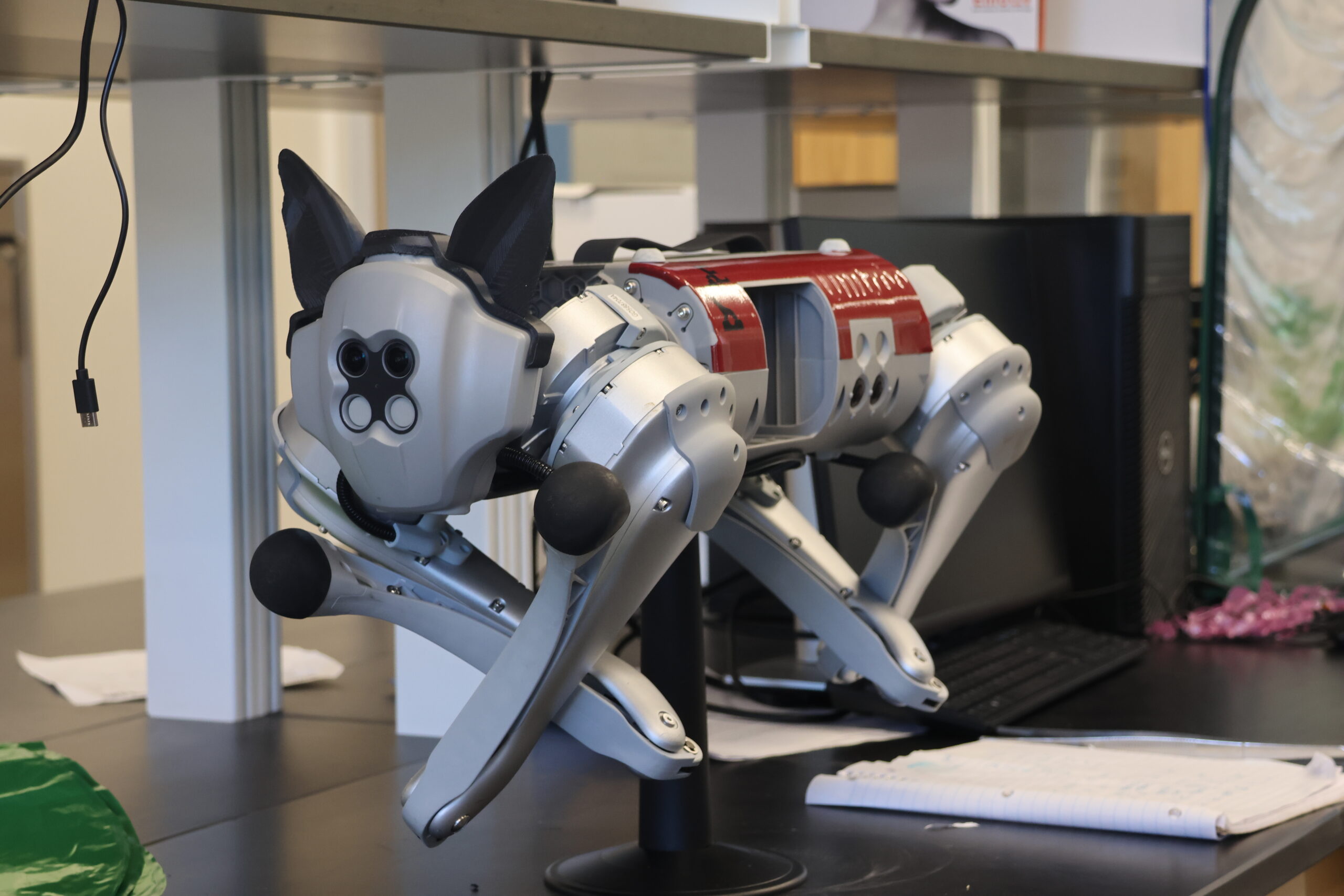
An atypical service animal may be making its way into non-animal friendly places within the next few years thanks to Elon researchers, who are working on creating robotic dogs with artificial fur.
Elon University mechanical engineering major and rising senior Zoë Scherpbier and assistant professor of engineering Blake Hament have built the dogs to counter the lack of awareness about service animals.
The combination of the mechanical dog and sensorized fabric is an unexplored idea meant to imitate fur for comfort and aesthetics. It’s so niche that Scherpbier had trouble with the research aspect of the project.
The term sensorized fur comes from Scherpbier and is defined as yarn with pressurized points that can react to any physical interactions with the robotic dog.
“So the fur itself is the sensor,” Scherpbier said “We’re comparing those two and then we’re mixing them in a blend and creating its own yarn and weaving them or knitting them together and then detecting cross sections. So the actual yarn itself will be the sensor.”
The robotic dog was designed to ease people with anxiety and PTSD. “What if I did something that involved something emotional support wise?” Scherpbier said.
The sensation of the imitation fur underneath someone’s fingers aimed to have a calming effect for those who come in contact with it. Scherpbier and Hament strived to remove the eerie aspects of the robotic dog. They hoped to bridge the gap between the robotic and the biologically alive. Additionally, it would ensure a cleaner environment in public spaces because the dogs cannot carry illnesses or use the bathroom.
Another goal of this creation is to offer people information about their heart rate, blood pressure and posture by revealing pressure points, similar to sensitized fabrics’ use in the medical field. The goals are theoretical because the technology has not been tested yet, but Scherpbier said she believed the robotic dogs would be limited by water or heat because of the specific fabrics being used in the fur, making it not as convenient as a typical service animal.
Scherpbier said that she used a combination of stainless steel fibers, and either cotton or acrylic fibers. Scherpbier said cotton would be the most aesthetically pleasing, but the most limited of the three. Through a tedious process called drop spindling, a combination of $20 yarns turn into imitation fur. Reminiscent of a spinning wheel, Scherpbier intertwined a previously brushed out combination of stainless steel and acrylic/cotton into a weave, meant to encase the dog.
The development of this advanced technology brings an ethical issue into question about the replacement of emotional support animals with robotic ones.
But the accessibility of service animals for groups who need it were strained because of the instability of the current economy. Compared to the $15,000 cost of service animals, according to supportdogcertification.org, robotic dogs are cheaper, costing around $10,000, according to Scherpbier. Even so, Scherpbier said “the robot dogs are not an attempt to replace regular service animal dogs.”


